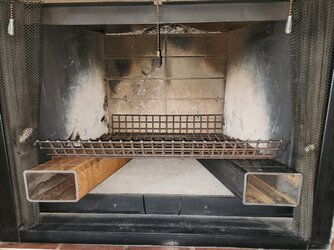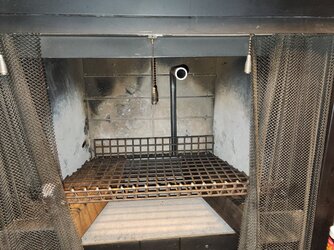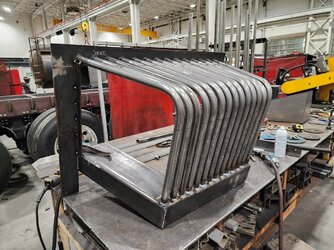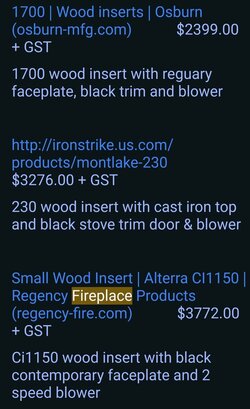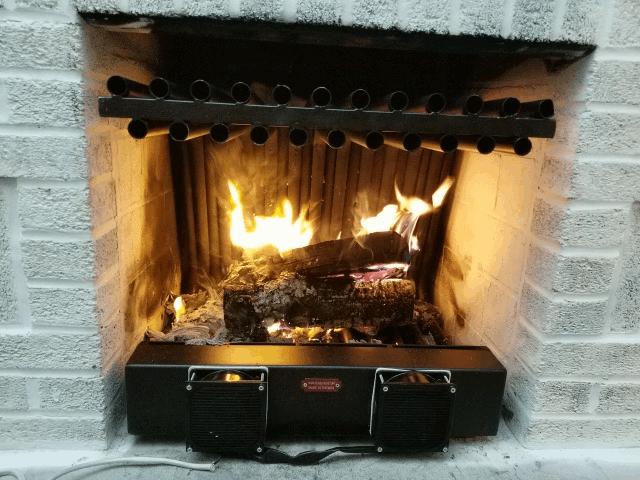Hello, this is my first post. Found this forum while searching around for advice on how air flows around the house and how inserts work etc.
I have two main questions at this time.
A little background.
I like to build things as that's what I do. And Inserts are crazy expensive, so I built my own heat exchanger off a few pictures I found online from a website called hasty heat. My house is in Edmonton area Canada. And is an open concept bungalow from the late 70s. Just testing the insert now, that's why it has no paint. Will probably get it ceramic coated. Basically until a few months ago when I decided to start this I had no idea even what a heat exchanger did or was. My goal is to make this thing as efficient as possible within budget. I realize what I might spend on this question will probably be the most expensive thing so far on it. I've only spent 300 or so dollars so far on materials and almost 30 hours of spare time. It heats up the area nicely. My thermometer only goes up to 50C and when I place that over the holes on the top it reaches that in seconds. The fans are from Amazon and have aluminum housings, I have gasket fabric that is good for 1000C for a barrier as well. However even without the gasket, the fans to not even get warm while running. The rectangle tube they are mounted to is 1/4" thick. And the gaurd is 1/8". The bent round tubes are 0.083 x 1" erw tube. The entire insert slides into the existing fireplace and sits there with to bolts. I am planning on making a tighter mesh as there is too much smaller coals that drop through the 1" mesh holes that the fire sits on. The insert makes the fire last much longer than it did just in the open. The door is perferrated metal screen that was easy to come by. The fire sucks air through the screen. There is an opening that hasn't been covered by a bezel yet at the bottom below the fans and ashtray. I am planning on putting the same mesh as the door is, down there.
This is my first question, would getting a piece of glass made up for the door instead of the screen cause this insert to be more efficient in getting the heat out, and making the fire last longer? If so why or why not?
Second question has to do with air pressure. The hot air coming out of the top holes can only be felt against my hand about a few feet away. Would closing them up, making them smaller, thus causing more back pressure, get the air to shoot out farther into the room?
Is this even an issue? I feel forcfully getting air farther into the room would make it hotter faster, but maybe not. That is why I'm here.
I can post more picture of the build process if you'd like and will answer questions to fill in the blanks.
Thanks,
Jake
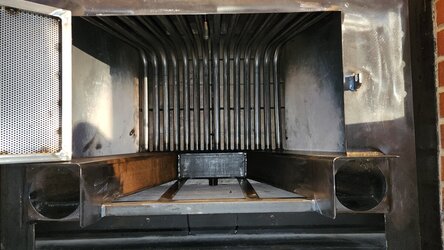
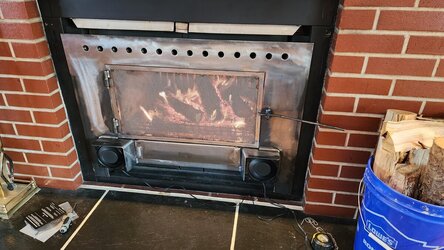
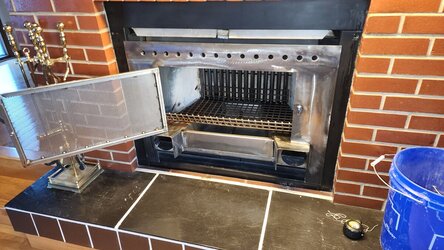
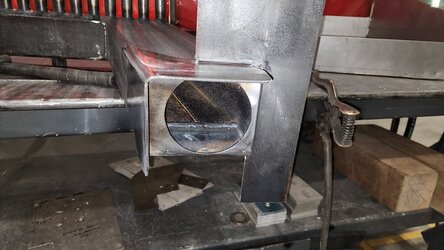
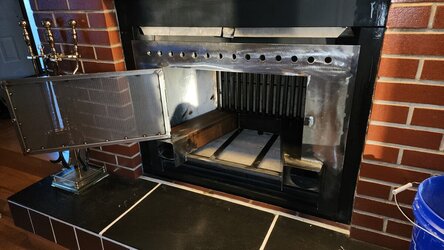
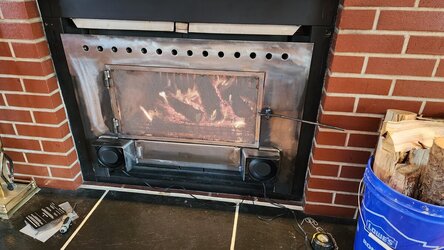
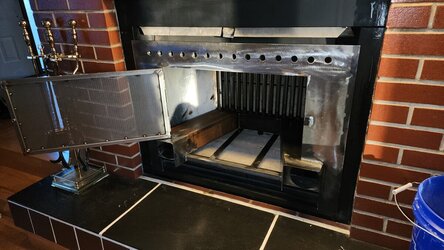
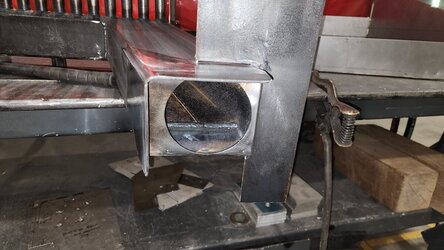
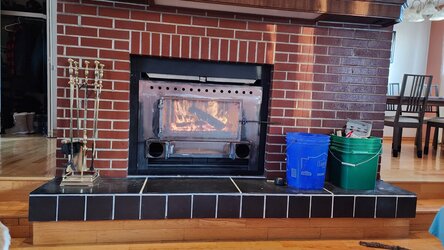
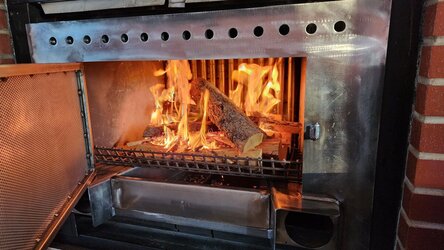
I have two main questions at this time.
A little background.
I like to build things as that's what I do. And Inserts are crazy expensive, so I built my own heat exchanger off a few pictures I found online from a website called hasty heat. My house is in Edmonton area Canada. And is an open concept bungalow from the late 70s. Just testing the insert now, that's why it has no paint. Will probably get it ceramic coated. Basically until a few months ago when I decided to start this I had no idea even what a heat exchanger did or was. My goal is to make this thing as efficient as possible within budget. I realize what I might spend on this question will probably be the most expensive thing so far on it. I've only spent 300 or so dollars so far on materials and almost 30 hours of spare time. It heats up the area nicely. My thermometer only goes up to 50C and when I place that over the holes on the top it reaches that in seconds. The fans are from Amazon and have aluminum housings, I have gasket fabric that is good for 1000C for a barrier as well. However even without the gasket, the fans to not even get warm while running. The rectangle tube they are mounted to is 1/4" thick. And the gaurd is 1/8". The bent round tubes are 0.083 x 1" erw tube. The entire insert slides into the existing fireplace and sits there with to bolts. I am planning on making a tighter mesh as there is too much smaller coals that drop through the 1" mesh holes that the fire sits on. The insert makes the fire last much longer than it did just in the open. The door is perferrated metal screen that was easy to come by. The fire sucks air through the screen. There is an opening that hasn't been covered by a bezel yet at the bottom below the fans and ashtray. I am planning on putting the same mesh as the door is, down there.
This is my first question, would getting a piece of glass made up for the door instead of the screen cause this insert to be more efficient in getting the heat out, and making the fire last longer? If so why or why not?
Second question has to do with air pressure. The hot air coming out of the top holes can only be felt against my hand about a few feet away. Would closing them up, making them smaller, thus causing more back pressure, get the air to shoot out farther into the room?
Is this even an issue? I feel forcfully getting air farther into the room would make it hotter faster, but maybe not. That is why I'm here.
I can post more picture of the build process if you'd like and will answer questions to fill in the blanks.
Thanks,
Jake












